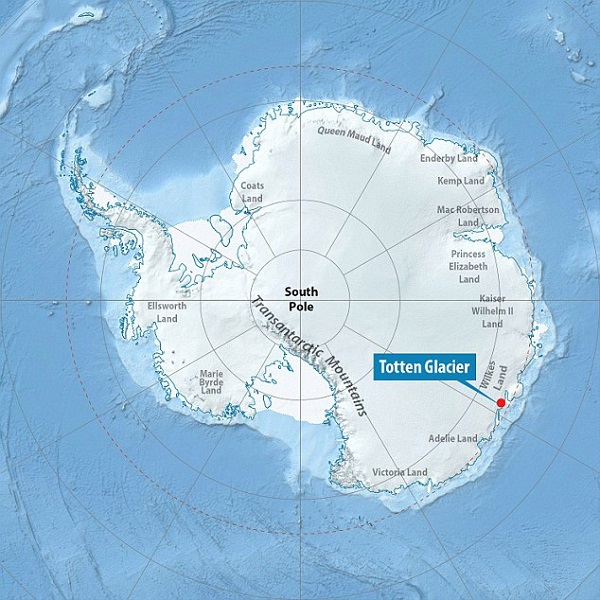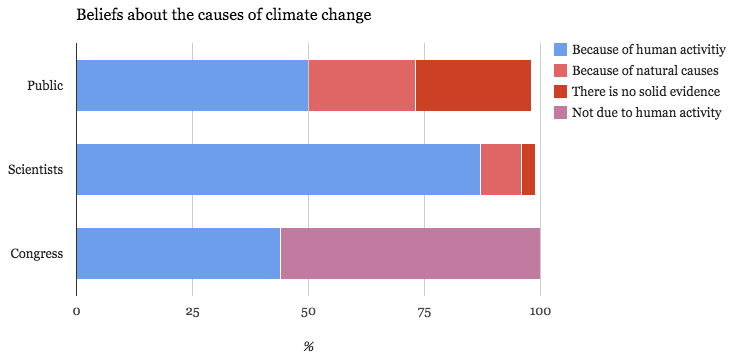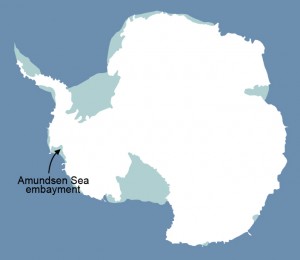1. Mushroom packaging

Biodegradable packaging has been made from mushrooms for use as foam, insulation and the like.
The article doesn’t say whether it is cost competitive.
2. Climate’s threat to wheat
A new study finds that wheat yields drop on average by 6% for every degree Celsius rise in temperature.
Global production of wheat was 701 million tonnes in 2012, but most of this is consumed locally. Global trade is much smaller, at 147 tonnes in 2013.
The loss of production per degree equates to 42 million tonnes, with obvious implications for shortages and prices. Year-to-year variability is likely to increase.
An obvious strategy is to develop and use heat tolerant varieties. My understanding is that there has been a reduced research capacity generally in agriculture across the world.
3. Solar has done well
Worldwide, solar energy has continued to grow even when economies were shrinking. By 2013, almost 138.9 gigawatts (GW) of photovoltaic (PV) had been installed globally, states the European Photovoltaic Industry Association in the report Global Market Outlook for Photovoltaics 2014-2018.
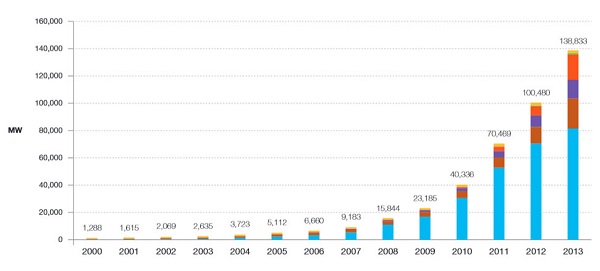
From the bottom, blue is Europe, brown is Asia Pacific, purple is the Americas and orange is China.
The pdf is here.
Europe added almost 11 GW, second only to wind.
In the US alone, there are now about 174,000 jobs linked to solar energy, with 36,000 new jobs expected by the end of this year.
India’s plans to build a solar PV modules manufacturing plant over the next three years worth US$4 billion and 20,000 new jobs.
Giles Parkinson tells how the costs of solar will fall a further 40% in the next two years, reaching grid parity in 80% of global markets.
4. Australia could become manufacturing hub of battery storage
The International Renewable Energy Agency (IRENA) met in Abu Dhabi last weekend, ahead of the World Energy Future Conference in the same venue. Australia thumbed its nose by sending an embassy staffer rather than a minister, as a country genuinely interested in renewables would have done.
Australia is increasingly being seen as a “no-hoper” and an “outlier” in terms of large scale renewable energy.
No-one seems to have told Donald Sadoway, a professor from the Massachusetts Institute of Technology, who is seeking to strike up research partnerships with Australian universities and secure funding of $50 million for a pilot manufacturing plant of the liquid flow batteries.
Sadoway thinks Australia would provide a strong home market, ideal for remoter population centres difficult to serve with a high quality grid.
The LMBs [liquid metal batteries] are being hailed as a potentially low cost option for utility-scale battery storage. That is because the nature of the technology means that they can cycle – or discharge – thousands of times without having its capacity reduced.
The batteries could last for 300 years.
No doubt the minister for industry will quietly tell him that we don’t do large scale renewables, or manufacturing, in Australia.
5. Inconvenient truths hit the cutting room floor
Inconvenient words about climate change and torture were snipped out of President Obama’s State of the Union speech when posted on the (Republican) Speaker’s official site. Words like this:
The best scientists in the world are all telling us that our activities are changing the climate, and if we do not act forcefully, we’ll continue to see rising oceans, longer, hotter heat waves, dangerous droughts and floods, and massive disruptions that can trigger greater migration, conflict, and hunger around the globe.
Pathetic!
6. Republican opinion on climate change
Meanwhile the Republican-controlled US Senate has voted 98-1 to say the climate change is real and not a hoax. However, that doesn’t mean that humans are the cause. After all the Bible tells of climate change and it’s just arrogance to think humans are the cause!
At least Mitt Romney thinks humans are the cause and thinks (again) that we should do something to stop it. How arrogant is that?!
A recent Yale study identifies four different kinds of Republicans – liberal, moderate, conservative and Tea Party. While overall only 44% of Republicans think global warming is happening, the sub-groups vary considerably:

Yet overall 56% think CO2 should be regulated as a pollutant, again with vast variations of opinion:
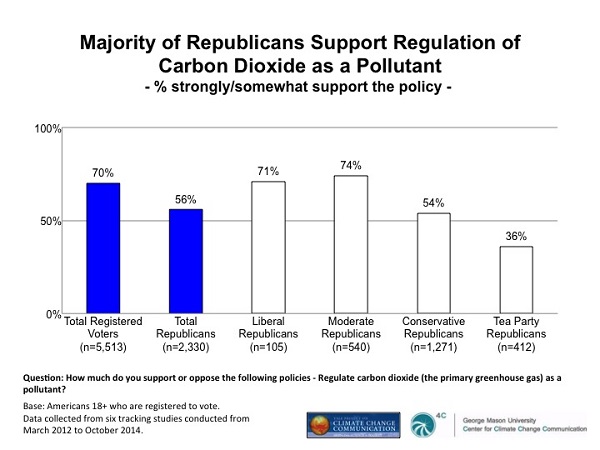
7. Ocean warming accelerating
The story about 2014 being the hottest year has upstaged a more important fact – ocean warming is off the charts:
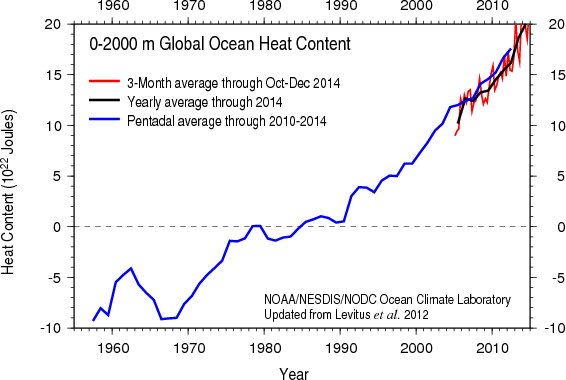
2014 heat referred to surface temperature. Since about 93% of additional heat resulting from global warming ends up in the oceans, they give a better indication of changes in the Earth’s energy system.
John Abraham at The Guardian links to a thorough review of ocean heat measurement methods.




